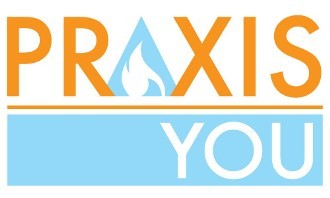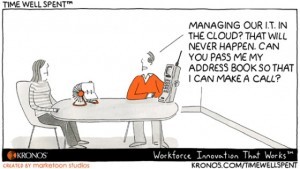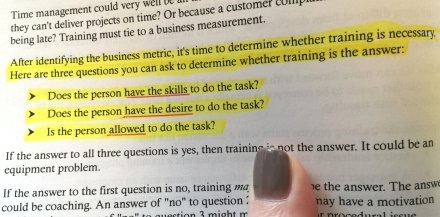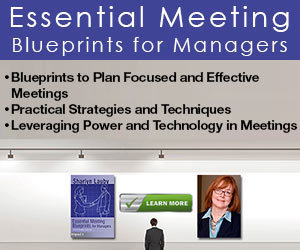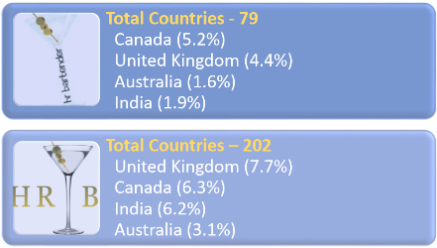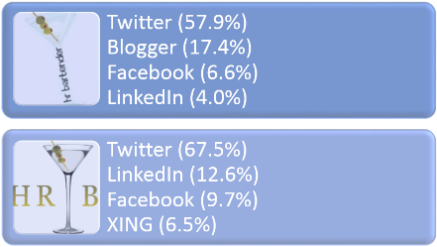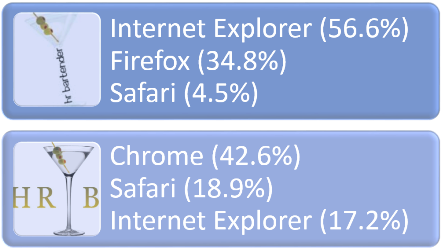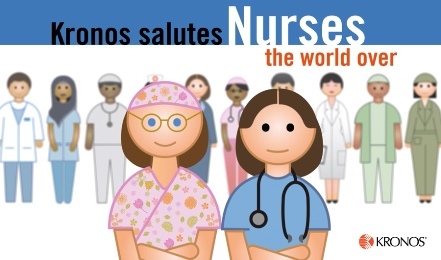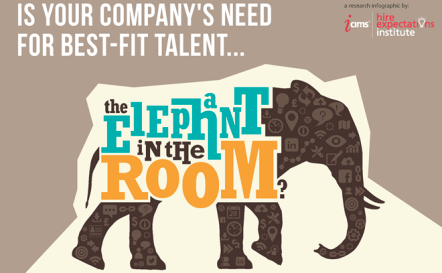Sharlyn J. Lauby's Blog, page 176
May 17, 2015
Future Leaders Need Organizational Mindfulness
The business world today is experiencing a leadership gap. We talk about the skills gap and the challenges facing recruiting. What about leadership? It only seems logical that if there are gaps at other levels of the organization…there will be a gap at the leadership level. I don’t hear anyone saying, “We have plenty of great leaders; we just don’t have any good employees.”
Organizations need to take an active role in creating their leaders. It doesn’t seem practical to assume that one activity alone can prepare future leaders. Educational institutes cannot do it alone. The individuals themselves cannot do it alone. Business must be involved.
I recently had the opportunity to speak with Elad Levinson. What intrigued me about our conversation is his background. He is both an experienced organizational development and effectiveness consultant as well as a practitioner of mindfulness. His background includes senior management roles with Stanford University, Agilent Technologies and ICANN. I wanted to hear his thoughts on balancing our roles as leaders in business world with mindfulness.
Elad, what would you say are the key competencies an individual needs to be successful in today’s business world?
[Elad] The most underrated competencies are those that require self-understanding. For example, a very important competency is the ability to regulate your internal responses and reactions to external triggers, like difficult conversations. This competency requires three traits:
Awareness of internal conditions that lead to specific reactions;
Language skills that make it possible to name and monitor those feelings that often accompany cognitive responses; and
Organizational methods for putting the response in specific terms that accomplish your intended outcome.
That being said, are employees being provided the opportunities to develop the competencies you’ve mentioned (whether that takes place in a school or work setting)?
 [Elad] I think time starvation has become the enemy of learning and development. It’s also the one issue that we have a lot more influence over than we give ourselves credit for! It just takes focus, discipline, and a clear sense of what is important.
[Elad] I think time starvation has become the enemy of learning and development. It’s also the one issue that we have a lot more influence over than we give ourselves credit for! It just takes focus, discipline, and a clear sense of what is important.
All too often I hear leaders say that the training of their direct reports or team members is cast off as not urgent or not essential. Most company cultures are not challenging the assumptions that multi-tasking, frequent interruptions through all manners of communication, office inefficiencies and the like occupy so much time but produce very little value in the long run.
When Bill Sullivan, the longtime CEO of Agilent, took his role he said the job of a leader is to set strategy, build organizational capability and capacity, and execute on results. That’s why creating space for learning and development is so crucial. I regret that the development cultures of long-standing good companies have begun to ignore the need for employees to grow, learn, and expand their portfolio of skills for the exigencies of today.
Since human resources is traditionally involved in conversations about succession planning, recruiting and leadership development, what can HR do to bridge this gap between the skills needed for success and the opportunities necessary to get them?
[Elad] I strongly believe that HR has a critical role in the cultural development of a company’s learning and development model. Here are three crucial steps that HR can take to improve the likelihood that competency building is the norm:
Develop a position paper that articulates the best practices of development cultures. The paper should include a business case for the resources, time, and intention to place development as an intrinsic part of the company. Take that position paper and stump for the acceptance and approval at every stakeholder meeting and with senior staff.
Make the HR department function as an exemplar of development. Show how your staff is developing the skills and capabilities needed for HR to function today and in the future.
Be sure development is a critical competency in the framework of performance management. Build it into the reward and recognition system and place incentives and consequences for leaders who ignore the development of their people and themselves.
Don’t be afraid to be a monomaniac with a mission. Better to go down knowing you stood for what was right than to give into the tendency to act on urgency not strategy.
I’ve noticed a growing conversation about mindfulness and leadership. As one of the first to apply the stress theory to business and leadership, how can mindfulness help individuals and organizations develop better leaders?
[Elad] I think of meditation as mind and emotional intelligence training. There are quite subtle but exceptional outcomes from mindfulness training that are valuable for any leader. According to my peers and my staff, mindfulness training has made me:
Less reactive and more likely to listen carefully to others’ perspectives—especially when they are directly in conflict with my own intentions or assumptions. I am able to consider that I might be wrong or need to be inclusive of views that challenge my own.
Intent on generating and cultivating goodwill with my peers, staff and stakeholders. I tend to know how to incline my thinking and actions so that it is in line with my intent to do well in speech or action.
Better able to investigate myself. I am extremely curious and you will know this if you are short on time and listening to my latest curiosity or passion-driven exploration! I am aware of so much more of my personality that used to be quite unconscious—and perhaps motivating—but not particularly skillful. My curious nature extends now to understand my drives and motives, and prevents me from mindlessly reacting.
Insight seems to be an important skill that is developed by mind training. I can see into problems and decision-making processes that in the past I might have ignored or been mindless about.
I know that my newfound authentic interest in others’ perspectives leads them to trust me and work more collaboratively with me. I am not a threat to their intentions and desires since I am committed to being inclusive and cooperative when it is appropriate.
Over the years, you’ve been a trusted ally and coach to executives and leaders. This has led to innovative approaches helping leaders thrive on change. Tell us about the course you’ve created for Praxis You called “Thriving on Change.” What will this program provide organizational leaders that isn’t being taught in B-school?
[Elad] Thriving on Change rests upon three pillars. These pillars are:
Mindful awareness. This is operationalized in the course as both moment-to-moment awareness of the incremental and subtle changes occurring internally and in the business environment, as well as an awareness of reactions that are emotional, cognitive and physical.
Focus, attention and relaxation. In the course there are skills and tools that train participants to learn how to focus for long periods of time with less stress; lift attention off a focus and place it somewhere else consciously and intentionally; and relax attention when ‘underdoing it.’ Students are also trained how to direct the attention of staff and others to the right stuff—that which is strategic and important.
Generating and cultivating goodwill. Goodwill is that invisible but critical lubricant that makes cooperation, collaboration and skillful conflict resolution possible. Mental and active tools that help the learner incline herself to goodwill will in turn promote a culture of positivity (and often result in voluntary stakeholder engagement).
 ‘Thriving on Change’ rests on the assumption that learning these skills will give users the toolkit to make the right strategic decisions, mindfully, in times of high stress. As such, the course is highly action-oriented with varying ways to incorporate new or more highly developed competencies into your daily life in both personal and professional scenarios. To learn more, visit https://morethansound.net/praxis/.
‘Thriving on Change’ rests on the assumption that learning these skills will give users the toolkit to make the right strategic decisions, mindfully, in times of high stress. As such, the course is highly action-oriented with varying ways to incorporate new or more highly developed competencies into your daily life in both personal and professional scenarios. To learn more, visit https://morethansound.net/praxis/.
Many thanks to Elad for sharing is expertise with us. If you want to stay in touch with his work, you can download his new ebook “Learn to Dance on Jello”, or follow him on Twitter. He’s currently the senior organizational effectiveness consultant at 4128Associates and you can reach out to him there as well.
While I continue to believe that leadership skills need to be developed at every level of the organization, that doesn’t mean that they should be developed in a singular fashion. Companies need to cultivate leaders using a variety of methods and topics.
Image courtesy of Sharlyn Lauby
Related posts from HR Bartender:
 Companies Are Not Prepared for Aging Workers
[image error]
Employees Demand More Career Agility
Companies Are Not Prepared for Aging Workers
[image error]
Employees Demand More Career Agility
 High Performing Organizations Manage Change Well
High Performing Organizations Manage Change WellThe post Future Leaders Need Organizational Mindfulness appeared first on hr bartender.






May 15, 2015
When A Process Becomes Obsolete – Friday Distraction
I received a phone call from a friend this week who mentioned having 4 rotating file devices used to store business contact information on her desk. Maybe you’ve heard of these before – the name is a portmanteau of the words rolling and index. I couldn’t help but wonder, do people still use those? I figured everyone has a digital contact directory by now. But after a quick search, I discovered that you can still buy them at most office supply stores. Who knew?
But I can definitely see a day when certain paper items become obsolete. Or at minimum, become very hard to find. Then decisions have to be made. Will you spend more to have the paper version because it’s comfortable? Or transition to a new way of doing things?
This isn’t just an individual thing. The same goes for our business processes. Today’s Time Well Spent from our friends at Kronos is a reminder that never is a very long time.
We certainly do not have to be early adopters of every new technology or process. We do need to recognize trends and challenge ourselves to try new (and maybe more effective) ways of accomplishing the same goal. Being left behind isn’t advantageous or profitable.
Related posts from HR Bartender:
 Everything #HR Needs to Know About “The Internet of Things”
Everything #HR Needs to Know About “The Internet of Things”
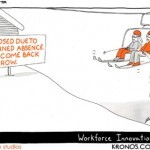 Planning For the Unexpected – Friday Distraction
Planning For the Unexpected – Friday Distraction
 National #NursesWeek: May 6 – 12
National #NursesWeek: May 6 – 12The post When A Process Becomes Obsolete – Friday Distraction appeared first on hr bartender.






May 14, 2015
Learning a New Skill Makes Your Other Skills Better
I’ve mentioned before that Mr. Bartender and I are fans of the television show Mythbusters. If you’ve never seen it, the show is hosted by two special effects experts who test myths, urban legends, and such. Some of my faves include what will cure the heat that occurs from eating spicy food and certain types of footwear can impair a person’s ability to drive. You can check out the Discovery Channel’s video clip and see if it was busted or confirmed.
So when Adam Savage and Jamie Hyneman decided to do a “Behind the Myths Tour”, we had to go. A very interesting and fun part of the show was when Adam was sharing with the group his juggling skills. He explained that as a kid, he wanted to learn how to juggle. So he got the book “Juggling for the Complete Klutz” to help him. He would practice and practice. He discovered that when you learn one new skill, your other skills get better too.
But learning a new skill meant that he had to get comfortable with failure. In the case of juggling, it was the sound of balls dropping. Over time, he realized he wasn’t hearing failure when the balls dropped, but actually the sound of progress.
It reminded me of the presentation Adam gave during last year’s KronosWorks conference. I went through my notes from the session and there were three big takeaways:
Don’t be afraid to get your fingers dirty.
You conduct an experiment to learn.
Failure is always an option because you can learn from it.
I do believe that, in business, we have to realize that we cannot make the same mistakes over and over. I don’t think that’s what Adam was talking about here. Experimenting is good. Trying new things is good. Try it then evaluate. Never in business have we embraced risk taking, trying new things, making mistakes and learning from failure more than today.
Learning a new skill makes your other skills better
Click To Tweet
As business professionals, we need to try new things. And we need to encourage our team to try new things. That’s how we learn. And trying that new thing, makes the rest of our skills stronger.
So, what new thing are you going to try today?
Image courtesy of Sharlyn Lauby
Related posts from HR Bartender: [image error] 5 Business Lessons from Watching Mythbusters
 Your 5-Day Plan to Learning YouTube
Your 5-Day Plan to Learning YouTube
 Quick Shots for #HR and #Business Pros – March 2015
Quick Shots for #HR and #Business Pros – March 2015The post Learning a New Skill Makes Your Other Skills Better appeared first on hr bartender.






May 12, 2015
Is a Training Meeting the Best Approach
(Editor’s Note: Today’s post is an excerpt from my book, “ Essential Meeting Blueprints for Managers .” The book is available on Amazon in hard copy and Kindle , in the iTunes store, and directly from the publisher.)
There an important step to the training process – answering the question “Does it need to be a meeting?” Given the number of meetings out there, it’s amazing to me how many people don’t ask this question. We’ve decided training needs to be conducted. What’s the most effective way to deliver the training?
There are two key elements to consider when trying to decide if the training you’re planning should be conducted during a meeting: message and medium.
Message is the point you’re trying to get across. What do you want people to come away with from your training?
For example, if you’re a restaurant manager trying to teach your servers how to open a bottle of wine, a training meeting would be perfect. Employees can see a demonstration and have the chance to open a bottle of wine to practice.
On the other hand, if you want all of your employees to learn the basics of a social media platform, it would be possible for you to ask them to view a video, create an account, and connect with you before the next team meeting. Did the employee learn something? Yes. At the point they connect with you, they’ve learned how to set up an account. But it didn’t take a meeting for that type of learning to happen.
Training meetings are perfect for topics that involve complex discussion or multiple steps. The training agenda allows for discussion and practice. While it can be done, straightforward subjects or activities might not require a meeting. It might be possible to use another method, which brings me to the second consideration.
Medium is the communication tool you use to get that point across. It might be PowerPoint, video, lecture, etc.
A new hire employee needs to learn the organization’s ethics policy. The company has prepared a pre-recorded webinar with the CEO and human resources director talking about the policy and common scenarios the employee might face. Both during and at the end of the webinar, the employee answers questions regarding the information presented. The employee is learning and the company is getting confirmation that the employee understands the material. But a meeting did not occur.
A nonprofit animal shelter invites a veterinarian to speak on the signs to look for in feline leukemia. Did learning take place? Yes. The staff in attendance learned the signs they need to be aware of when working with cats. And in this case, a meeting did take place.
Now, is it possible that the animal shelter staff could have read a book or watched a video and still learned the information? Maybe. But let’s say the veterinarian is the local expert on the subject and it was the group’s only chance to hear from the expert. That would be a good reason for a meeting. Or if the information needed to be presented to everyone quickly versus letting each person learn at their own pace by reading a book.
So for those times when physical presence or timing is key, training meetings are a good option.
The last element to consider when it comes to whether or not to hold a training meeting is what I’ll call the entertainment factor. Bringing people together can be fun. You can add non-meeting elements to the agenda like teambuilding and recognition. So if the message is a bit on the dull side (you know what classifies as dull in your industry), it might make sense to create a training meeting even if it’s not necessary and insert some other things into the agenda to make it more engaging.
The caution with doing this is that the fun part of the agenda cannot overshadow the training part. It’s not a fun meeting with a little insertion of training. It’s a training meeting with a little infusion of fun. If the fun, entertaining part overshadows the training, it’s possible that people will leave the meeting happy but with no clue what they were supposed to learn. The conversation goes something like this:
Employee: “Wow! What a great meeting. You should have heard him/her.”
Manager: “What did they talk about?”
Employee: (Insert sound of crickets here) “They were just so funny!”
I’ve actually seen this happen. The company needs to train employees on a very serious topic. But they also wanted to give the employees an enjoyable training experience. So the trainer they hired was humorous and entertaining. He was also very smart and knew the subject matter well. Don’t confuse being funny with not knowing the material. But the problem occurred when the trainer spent more time trying to get laughs than convey the important material. Subsequently, the employees did attend training but didn’t learn everything. The company was forced to hire another trainer to conduct more focused sessions a second time.
Choosing to conduct a training meeting is an important decision. Most companies already have plenty of meetings. A training meeting adds another meeting to people’s busy schedules. Calling a training meeting when it’s not needed can cause people to tune the message out. So instead of employees learning, they are walking in/out of the session, texting their BFF or planning their next vacation while the training is supposed to be taking place.
How do you know if a training meeting is needed?
Click To Tweet
As much as we want to think it’s only the content that counts, message and medium allow the presentation to be engaging and understood.
P.S. I hope you can join me and SHRM tomorrow at 3 p.m. Eastern for a #NextChat about business meetings. Bring your stories, peeves and tips – it’s sure to be a lively discussion! If you’re not familiar with Twitter chats – check out this video about the benefits!
Related posts from HR Bartender:
 Your Blueprint for Employee Performance Meetings
Your Blueprint for Employee Performance Meetings
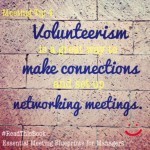 Networking Meetings Shouldn’t Be “All Take and No Give”
Networking Meetings Shouldn’t Be “All Take and No Give”
 Quick Shots for #Business and #HR Pros – Spring Reading Edition
Quick Shots for #Business and #HR Pros – Spring Reading EditionThe post Is a Training Meeting the Best Approach appeared first on hr bartender.






May 10, 2015
Want More Employee Productivity? Figure Out Their “Flow”
Over the past month, I have heard several people mention the concept of “flow” as a way to do better work. I believe we’re are always looking for ways to work smarter and more efficiently so these mentions of “flow” have peaked my curiosity.
I was excited to see that flow is one of the topics being covered at this year’s WorkHuman conference powered by Globoforce. So I reached out to Catherine Flavin, managing partner at Thrive Leadership to see if she would give us a sneak peek into her session. Luckily, she said yes.
Catherine, briefly describe “flow” and why it’s important.
 [Catherine] Flow is a mental state of being so fully engaged in a task that you lose track of time and place. In flow, you are deeply engaged, cognitively and emotionally. You experience new levels of motivation, creativity, innovation and performance, and it is a tremendously happy, peaceful state. It’s described as peak experience and peak performance — highly productivity and innately worthwhile.
[Catherine] Flow is a mental state of being so fully engaged in a task that you lose track of time and place. In flow, you are deeply engaged, cognitively and emotionally. You experience new levels of motivation, creativity, innovation and performance, and it is a tremendously happy, peaceful state. It’s described as peak experience and peak performance — highly productivity and innately worthwhile.
Mihaly Csíkszentmihályi came up with the term because the people he interviewed described their absorption in their work as being so natural and fluid that it carried them along like water, without conscious effort and with tremendous focus.
Is flow a state a mind or the result of an optimum environment? Are those the prerequisites to achieving flow?
[Catherine] While mindset and place matter, they are not enough. To enter flow, a person needs these three essentials:
A goal that you are passionate about.
A task on which you get clear, immediate, non-threatening feedback as you go.
A just-right level of real challenge — that is, enough to push you, but not so challenging that it intimidates you or makes you too anxious.
Let me give you an example. For me, analyzing data so a client can understand what their leaders or employees are saying is meaningful and challenging, but not too challenging as I have lots of training and experience at it. So was making my parent’s 50th anniversary video, pulling together decades of pictures to tell their story. At 1 a.m., my husband would have to pull me from the computer. In each case, there was something really hard and worthwhile about the task, each had a clear end game, each was challenging, and I knew how I was doing as I worked, which kept me at it as time and worries faded.
Can anyone achieve flow?
[Catherine] Yes, we all can. We may not achieve flow in the same ways. I just described some of the common elements. And for each of us, there are individualized elements too.
For starters, what you find intrinsically motivating is likely different from what I do. And we may find flow in different ways. Some of us find it in connecting with other people. Some people find it in solitude where they can deeply consider issues or information. Others find their flow in physical movement or in creating. Cultivating flow requires those common conditions and attending to those individualized factors as well.
How does an organization support flow?
[Catherine] This is a really interesting question. Organizations whose leaders do these 3 ‘basics’ — big goals, real-time feedback, and the right level of challenge — really very well and consistently will foster more flow, and see the results in performance and engagement. I underscore consistency because we still see a surprising amount of variation in organizations in how effectively leaders do those things.
Beyond those basics, cultivating flow means personalizing the connection between the manager and the employee. It means bringing emotional intelligence to the next level, recognizing how each person is unique. We teach leaders to observe and ‘follow the employee’– that is, to watch for signs of people being intrinsically motivated by something, and to get to know skills and character strengths so those can be the grounding from which an employee stretches to meet a challenge. Those skills are essential because engagement and flow are deeply personal, emotional phenomenon. This is really where WorkHuman hits the nail on the head.
Lastly, cultures that encourage people to block time are smart. There’s a lot in normal business that works against our ability to achieve flow, such as hyper-busyness, a constant intrusion of emails, back-to-back meetings, face time pressures, etc. Our ability to focus is a valuable commodity that needs to be honored, too.
Besides your session during WorkHuman, where can people learn more about flow?
[Catherine] First and foremost, we can all learn from our own experiences, which we’ll talk more about in the WorkHuman session. Reflecting on situations when you were in the ‘zone,’ and recalling the conditions that led to your experience of flow, increases the chances you will experience it again. And, of course, I wholeheartedly recommend Mihaly Csikszentmihalyi’s books. His Ted talk is terrific as well.
My thanks to Catherine for sharing her knowledge with us. You can read more of her thoughts on the Thrive Leadership blog.
And if you want to hear her session on flow, there’s still time to register for WorkHuman 2015. HR Bartender readers get a discount – just use the code SLWH15100 to save $100 on registration.
Image courtesy of Sharlyn Lauby
Related posts from HR Bartender:
 Do The Job, Get The Job, Get Trained
Do The Job, Get The Job, Get Trained
 HOW TO: Talk About a Pay Increase
HOW TO: Talk About a Pay Increase
 Lead by Example
Lead by ExampleThe post Want More Employee Productivity? Figure Out Their “Flow” appeared first on hr bartender.






May 8, 2015
7 Things You Might Not Know About HR Bartender
Today marks the 7th anniversary of HR Bartender. Just in case you’re curious, here’s a link to my first post. Many thanks to you for being a part of the discussion. Your comments and shares are a very valuable part of the conversation.
As I was looking at the analytics for the blog, it occurred to me that many of the things we talk about as human resources professionals can be seen in the numbers. So I thought I would share with you some stats about HR Bartender and how it relates to what we do every day.
#1 – The top four HR Bartender posts of all time are:
How to Follow-up After a Job Interview
The Difference Between Knowledge, Skills and Abilities
7 Types of Power in the Workplace
The Real Reason for Exit Interviews
I thought it was interesting that the top four posts on the blog represent key places in the employee life cycle: getting hired, learning new skills and abilities, performing within the corporate culture and departing for hopefully a better opportunity. As human resources professionals, we talk with the organization about these topics every single day.
#2 – Global Reach:
Back then, HR Bartender reached 79 countries. Today, the blog reaches 202 countries. While the United States still provides the most readership, the blog has gained a real presence in other countries like India, Australia, Canada and the United Kingdom. It really speaks to the fact that today’s business world is becoming borderless and companies can no longer think their work doesn’t have a global impact.
#3 – Social Media:
No surprise – Twitter continutes to be a top driver of traffic and Blogger is not. FYI – XING is a social plaform based out of Germany. What I find interesting is the increase in traffic from LinkedIn, obviously a result of the changes they’ve made to encourage social sharing with Pulse and their publishing platform. If you ever wonder if your messages are being seen on LinkedIn, the answer is yes. People are paying attention to you and your company on social media.
# 4 – Mobile:
This one is and isn’t a surprise. No surprise that back in 2009, the blog received zero traffic from mobile devices. Today, the number is over 30%. If you’re trying to figure out how fast the mobile world is growing that can offer some perspective. Companies need to realize that individuals want access to their site via mobile. We just converted my corporate site – ITM Group – to a mobile responsive theme and we’re working on HR Bartender as I type this. Look for this conversation to continue after Google’s recent algorithm update, which will give mobile sites preference in search. What will be the impact on career sites that aren’t mobile optimized? Time will tell.
#5 – Internet Browser:
This statistic ties into mobile somewhat. Back in 2009, most people read HR Bartender via Internet Explorer. Today, Chrome is the most popular browser. The decrease in IE / Firefox and increase in Chrome doesn’t surprise me at all. Also, the Safari numbers can be the result of more iPhones and iPads. From personal experience, I’ve come to realize that browsers are a very personal thing. You have to find the browser that works for you. I’ve also realized that you can’t be exclusive to a single browser. Some sites are just not optimized for every browser, so having a backup browser is a necessity.
#6 – Quarterly pageviews:
In Q1 2009, HR Bartender had almost 8K pageviews (darn, so close!). In Q1 2015, the blog had over 190K. In case you’re not aware, a pageview is counted every time someone views a web page – makes sense, right? It doesn’t include when people read HR Bartender via email or using a RSS Feeder like Feedly. Individuals today have the ability to consume content from multiple sources and they will find the sources that they like the best. Similar to job postings. Candidates are going to the sources they enjoy the most and companies need to be there. Not the other way around..
#7 – Subscribers:
Obviously, when you start a blog, you have zero subscribers. In the first year, HR Bartender had almost 100 subscribers. Now we have over 5K. Some people will tell you that subscribers don’t matter. I think anyone who takes the time to read HR Bartender matters. A lot. If your company had a talent pool with 5K people in it, my guess is it would matter.
7 things you might not know about HR Bartender
Click To Tweet
Again, my sincere thanks for an awesome 7 years! I hope you found these numbers interesting and will continue to hang out at the “bar” for many years to come. Cheers!
Related posts from HR Bartender:
 How To: Start a Blog – Ask HR Bartender
How To: Start a Blog – Ask HR Bartender
 The Value of Corporate Awards
The Value of Corporate Awards
 5 Things I’ve Learned From HR Bartender
5 Things I’ve Learned From HR BartenderThe post 7 Things You Might Not Know About HR Bartender appeared first on hr bartender.






May 6, 2015
National #NursesWeek: May 6 – 12
(Editor’s Note: Today’s post is brought to you by our friends at Kronos , the global leader in delivering workforce management solutions in the cloud. They just announced that their Workforce Ready solution for small and midsize businesses has achieved “Built for NetSuite” verification. You can read more about it here . Enjoy the post!)
Today, May 6 is National Nurses Day. May 8 is Student Nurses Day. And International Nurses Day is recognized later this week on May 12 (which also happens to be Florence Nightingale’s birthday).
The American Nurses Association announced this year’s theme is “Ethical Practice. Quality Care.” It recognizes the importance of ethics in nursing and acknowledges the commitment nurses have for their profession. As a human resources professional, we talk about ethics and professional commitment all the time so I can appreciate the importance.
The Bureau of Labor Statistics projects that registered nursing is one of the top occupations in terms of job growth. It’s also projected that the U.S. will experience a shortage of registered nurses for the next couple of decades. To get people excited about a nursing career, we have to start educating individuals about the role nurses have played in health care.
My mother-in-law was a nurse. I knew her job was important but I didn’t realize how much the nursing profession has contributed to the history of health care. It’s no wonder that Nurses Week was created to recognize and honor the nursing profession.
Celebrate National #NursesWeek via @KronosInc
Click To Tweet
Our friends at Kronos know this and created this video in support and celebration of nurses everywhere. Check it out – it contains lots of interesting information about a profession that touches all of us. I thought the information about nursing and computer science to be very interesting.
There are many different work environments for nurses to practice their craft – hospitals, assisted living, home care, etc. As HR pros, we have the opportunity to open new career doors. To learn more about working in the health care industry, visit the Kronos’ “Time to Care” blog and “Health Care” industry page. And be sure to thank a nurse for the hard work and care they give us and our loved ones every single day!
Related posts from HR Bartender:
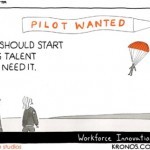 You Should Always Be #Recruiting – Friday Distraction
You Should Always Be #Recruiting – Friday Distraction
 Embracing Organizational “Outsiders”
Embracing Organizational “Outsiders”
 Will Technology Replace Recruiters – Ask #HR Bartender
Will Technology Replace Recruiters – Ask #HR BartenderThe post National #NursesWeek: May 6 – 12 appeared first on hr bartender.






May 3, 2015
You Can’t Have Self-Managed Teams Without Self-Managed People
It seems that the idea of self-directed work teams is coming back into vogue. I ran across this article recently about the companies that have embraced the practice. It’s called “Why self-managed teams are the future of business” and it’s worth a read.
Many years ago, one of the companies I worked for decided to move toward self-managed teams. A group of managers, including myself, spent months working on how self-managed teams could be incorporated into our culture. We ended up doing it, but looking back, I’m not sure it was really successful. I think what we really did was just create a new organizational structure and called it self-managed work teams.
But the one thing I did learn from the experience is this. You cannot have successful self-managed teams without self-managed people. Organizations cannot just write a memo that says “Poof! Ya’ll are self-managing now.” and leave people to figure the rest out.
In the self-managed teams project I worked on, we spent an incredible amount of time focused on the structure of the teams. That’s not where the emphasis needs to be. On some level, structure is the easy part. The challenge is helping team members figure out how they will solve problems, make decisions, and collaborate in a self-directed work environment.
Organizations looking toward self-management as a way to free up internal bureaucracy, flatten hierarchy, improve idea sharing, and reduce waste have to consider a few things in their plans.
Disengaged employees and self-management might not mix. If you consider the definitions of employee engagement and self-management, it seems logical that disengaged employees might not embrace self-management. Organizations will have to deal with this first and foremost.
Employees need training on the principles of self-management. Just like teams need training on team development skills, employees need some self-management training. This includes conflict management, problem solving, decision making, and communications skills.
Organizations have to share their plans for the future. Self-management works when employees know the goals of the organization and how they fit into those goals. This allows them to make good decisions that are in the best interest of the organization. Strategic planning and goal setting, along with transparent communications, are key.
Self-managed teams are the future of work
Click To Tweet
Self-managed work teams can bring a tremendous value to organizations when they are implemented correctly. A big part of that means setting employees who will work in a self-managing environment up for success.
Image courtesy of Sharlyn Lauby
Related posts from HR Bartender:
 Managers Aren’t Prepared to Handle Today’s Realities and Tomorrow’s Challenges
Managers Aren’t Prepared to Handle Today’s Realities and Tomorrow’s Challenges
![Companies Shift Focus to Retention [infographic] – Friday Distraction](https://i.gr-assets.com/images/S/compressed.photo.goodreads.com/hostedimages/1430737650i/14755419.jpg) Companies Shift Focus to Retention [infographic] – Friday Distraction
Companies Shift Focus to Retention [infographic] – Friday Distraction
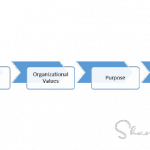 Corporate Culture Must Enable Organizational Success
Corporate Culture Must Enable Organizational SuccessThe post You Can’t Have Self-Managed Teams Without Self-Managed People appeared first on hr bartender.






May 1, 2015
Recruiting Is Your Competitive Advantage [infographic] – Friday Distraction
Finding and retaining top talent is a necessity for today’s businesses. We’ve talked about creating contingent workforce strategies and the benefits to buying, building, and borrowing talent.
It’s equally important to talk about developing your recruiting team. Recruiters need to have lots of tools to help them do their job quickly and efficiently. They need solid partnerships with department managers. They also need partnerships with external recruiting professionals and staffing organizations. And they need technology tools.
I thought this infographic from our friends at iCIMS did a nice job of connecting the importance of technology tools and recruiting strategy. If organizations want to find the best employees, they have to start talking about technology.
One of the statistics I found interesting was that 28% of respondents felt difficulty finding talent was an obstacle to meeting strategic goals. In addition, 19% mentioned not being able to take advantage of new opportunities. I can’t help but think these two are related. When finding talent is a challenge, it relates to everything in the business.
Companies cannot afford to fall behind in the talent acquisition game. Their bottom-line depends on it.
Related posts from HR Bartender:
 You Should Always Be #Recruiting – Friday Distraction
You Should Always Be #Recruiting – Friday Distraction
 Will Technology Replace Recruiters – Ask #HR Bartender
Will Technology Replace Recruiters – Ask #HR Bartender
 Message and Medium
Message and MediumThe post Recruiting Is Your Competitive Advantage [infographic] – Friday Distraction appeared first on hr bartender.






April 30, 2015
The Impact of UK’s Shared Parental Leave Law – Ask #HR Bartender
I recently received a question about the United Kingdom’s Shared Parental Leave law. Simply put – what is it, how does it work, and most importantly how does it impact companies and employees.
Since I do not live in the UK, I reached out to Michael Carty from XpertHR to help me understand this new piece of legislation. Michael is the editor of XpertHR’s Benchmarking data service. I’ve known Michael for years and he graciously agreed to share his knowledge.
And if you’re wondering why a U.S. blog would write about UK employment law, it’s simple. We can no longer think in terms of “my” country and “your” country. Issues like parental leave exist everywhere. Laws in the UK could easily get proposed in the U.S. and vice versa.
Michael, I know this first question is a toughie. Can you give us a brief description of the United Kingdom’s new shared parental leave law?
 [Michael] It’d be my pleasure. The new right to shared parental leave is probably the most significant change to UK employment law over the past few years. Shared parental leave gives mothers the right to end their period of maternity leave early and share untaken leave and pay with their partner.
[Michael] It’d be my pleasure. The new right to shared parental leave is probably the most significant change to UK employment law over the past few years. Shared parental leave gives mothers the right to end their period of maternity leave early and share untaken leave and pay with their partner.
The new right applies to working couples with babies due on or after 5 April 2015, provided each parent qualifies for leave and pay in their own right. There are similar arrangements for adoptive parents. You can find full details of shared parental leave in the XpertHR employment law manual.
Shared parental leave also offers parents flexibility in terms of how and when they take the leave. Eligible parents can request discontinuous periods of leave – that is, more than one period of shared parental leave, in blocks of at least a week.
All shared parental leave must be taken before the child’s first birthday or the first anniversary of the adoption placement.
Parents on shared parental leave can share up to 37 weeks’ statutory shared parental pay between them, at a flat rate of £139.58 per week from April 2015, or 90% of the employee’s earnings if this is less. The rate of statutory shared parental pay is the same as the rate of statutory maternity pay. For comparison purposes, average weekly earnings for UK workers are £459, according to latest official data.
One in five employers is planning to enhance their shared parental pay offering above the statutory minimum, new XpertHR Benchmarking research on preparations for shared parental leave finds.
Why was this new law created?
[Michael] The UK Government says shared parental leave is a family-friendly right, designed to promote a culture shift toward flexible working options for modern families.
Employment Relations Minister Jo Swinson recently wrote in Personnel Today of her hopes that ‘the outdated assumption that child care is only an issue for mums will be firmly put to bed as shared parental leave becomes more established.’
However, the XpertHR survey suggests that the UK HR profession has mixed views on shared parental leave. HR supports shared parental leave in principle. But it is concerned that the new right is complex to administer in practice.
I completely understand how a complex new law of this magnitude can be overwhelming. I know XpertHR has created several models and forms to help organizations manage this new law. But beyond the paperwork, is there a benefit for employers with this new law?
[Michael] Overwhelming is probably the right word!
HR welcomes the opportunity to offer shared parental leave to new parents. But nearly half of HR professionals taking part in our survey think that the introduction of shared parental leave has created a significant administrative workload for them.
The wording of shared parental leave legislation attracted particular criticism. For example, one HR professional described it as ‘user-unfriendly.’ There was also a general feeling that a lot of the heavy lifting on making shared parental leave work has been left to HR. Things should become clearer once the level of takeup is known, and when and if related case law provides further clarity around the new right.
But – for all its concerns about how shared parental leave will work in practice – HR strongly supports its underlying principles and purpose. Not one HR professional in our survey questioned whether or not it was right for the Government to introduce legislation to encourage both parents to take equal responsibility for child care.
What do employees need to know about the shared parental leave law?
[Michael] Above all, eligible employees need to know about the options available to them.
However, only a minority of employers in our survey have taken any action to raise awareness of the right to shared parental leave. Further, the survey suggests that HR lacks confidence in line managers when it comes to understanding and communicating the intricacies of the new right.
Eligible employees also need to weigh up the implications of moving to shared parental pay. Some could find themselves earning significantly less than normal while they take shared parental leave.
Shared parental leave could therefore be unaffordable for some eligible couples. One HR professional in our survey was concerned ‘that shared parental leave is going to be a more viable option for high earners, who are more likely to be able to afford to take it.’
Lastly, I see laws like this one being debated not only in the UK but globally. Do you see any global trends regarding parental rights that organizations should pay attention to?
[Michael] The groundswell of international interest in shared parental leave suggests it is an idea whose time has come.
I’d advise your readers to pay attention to the experience of employers in countries where shared parental leave arrangements have been introduced. Besides the UK, some other countries have their own shared parental leave offerings. For example, Sweden offers an ‘equality bonus’ – a tax credit – to encourage a more equal takeup of parental leave by men and women.
Think about what a right to shared parental leave means in practice, and how it might affect your organization. Ask yourself these questions:
What level of pay would you offer to employees taking shared parental leave?
What level of takeup could you expect?
Would there be any issues around arranging cover for employees on shared parental leave?
My thanks to Michael for sharing his knowledge. If you’re not already reading the XpertHR blog, I would recommend adding it to your list. They also have a LinkedIn group for discussing U.S. compliance, legal changes and best practices.
The far-reaching impact of the shared parental leave law
Click To Tweet
I must say as Michael and I were putting this post together, I was reminded of the same challenges and concerns I felt when the Family and Medical Leave Act (FMLA) was introduced years ago. Yes, there might be some nuances but there are also some big similarities. We might be thousands of miles away, but as HR pros, we’re facing the same challenges.
Related posts from HR Bartender: [image error] Is Anyone Recession Proof? [image error] Employee Respect Is an Unfair Labor Practice – Ask HR Bartender
 My Biggest Mistake
My Biggest MistakeThe post The Impact of UK’s Shared Parental Leave Law – Ask #HR Bartender appeared first on hr bartender.






Sharlyn J. Lauby's Blog
- Sharlyn J. Lauby's profile
- 10 followers



